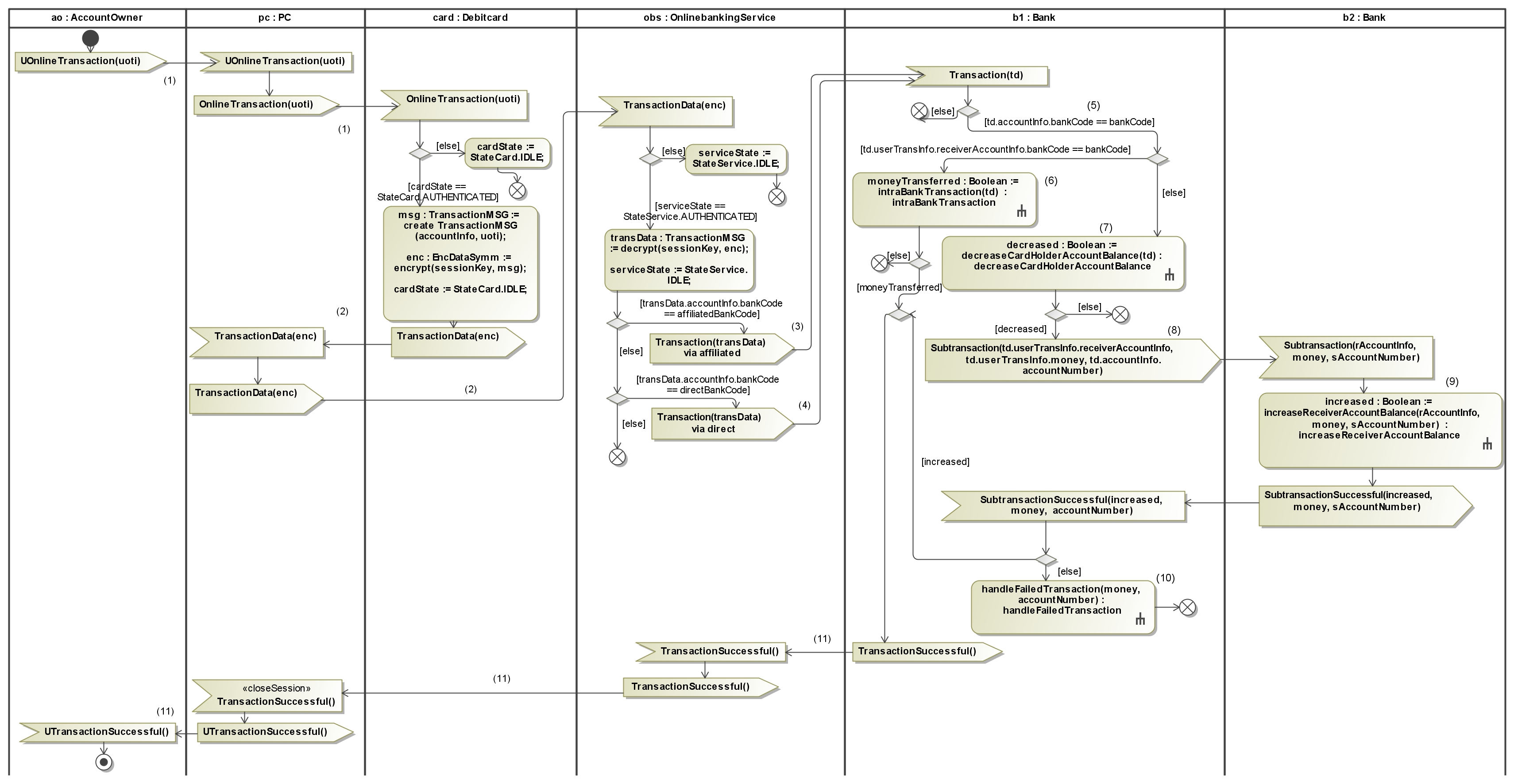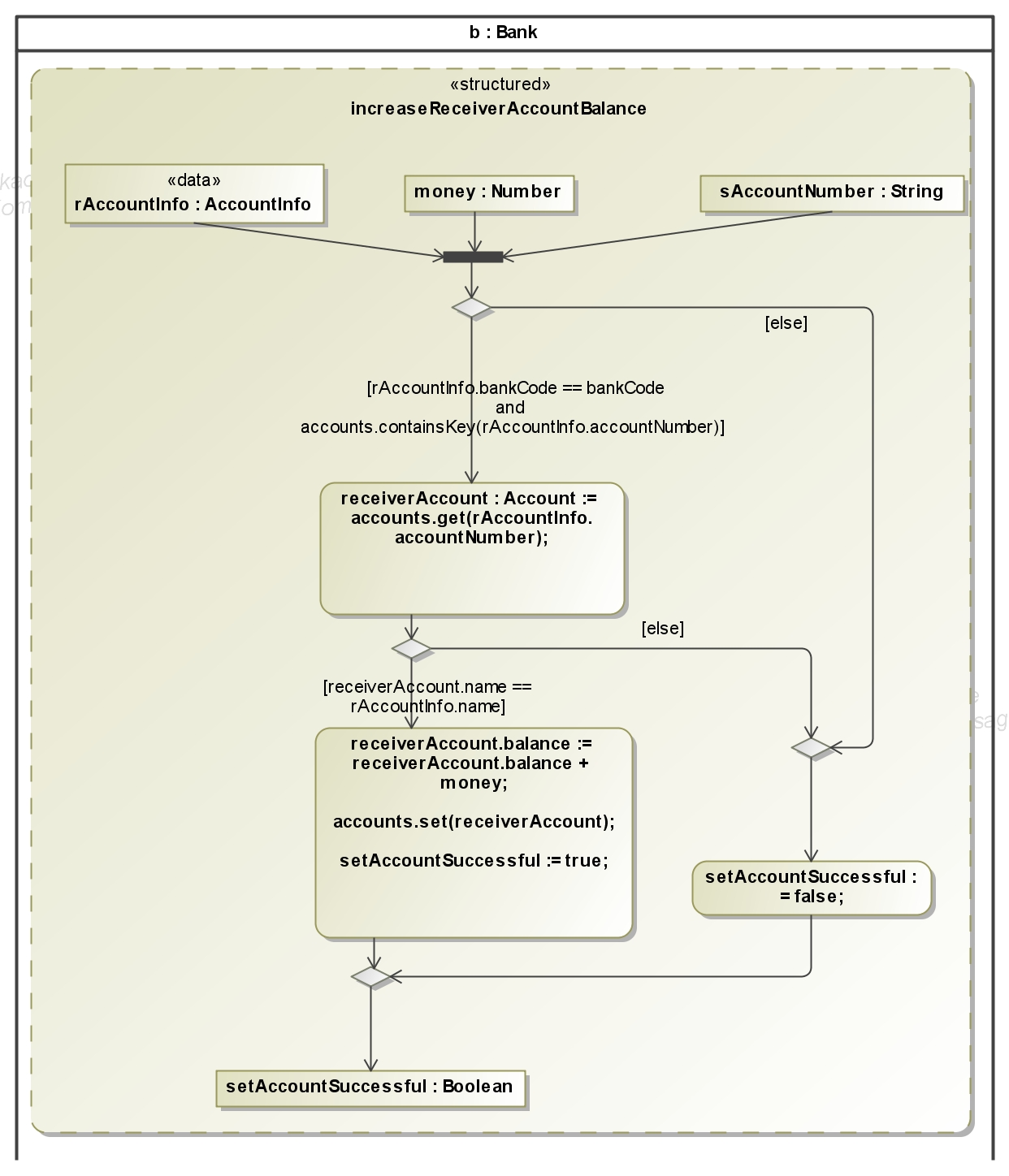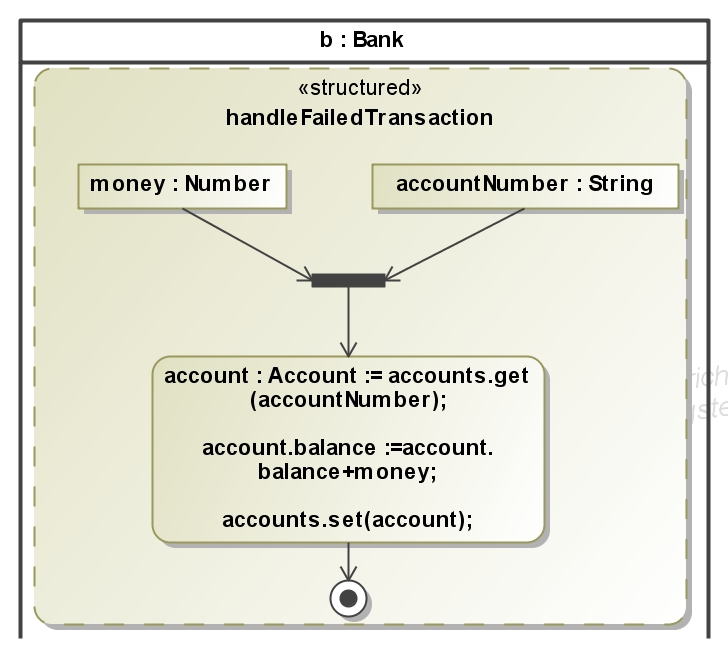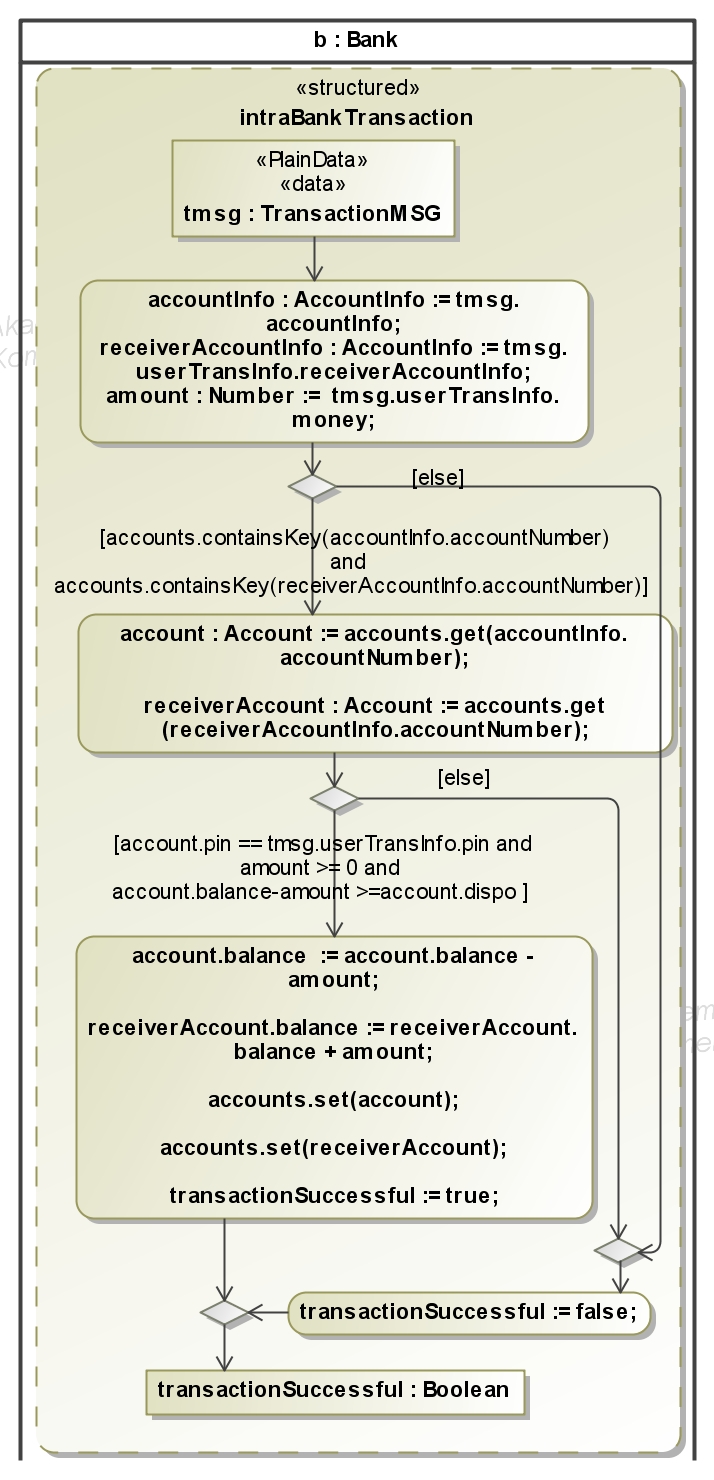
It establishes a secure session between Debitcard and OnlinebankingService. This protocol uses security data types defined in SecureMDD to secure the messages. We use private and public keys as well as nonces and states to exchange a session key to secure messages over an intermediate like in this example the PC component. There are four participants involved in this scenario. The AccountOwner ao, the PC pc, the Debicard card and the OnlinebankingService obs. First the message UHandshake is sent over the pc to card (1). Then if the state is IDLE, a fresh nonce will be created, wrapped in the class ClientHelloMsg and encrypted with the public key publicKeyOBS. Then the state will be changed and the encrypted nonce together with a certificate, consisting of the signature of the card's public key and the card's public key self, will be sent over pc to obs (2). But before pc can forward this message, it is necessary to know which instance of OnlinebankingService should be used. Because obs has to store session dependent information like states and the exchanged session key it is not possible to use the same instance for all invokers. For that OnlinebankingService is stateful and provides a new instance for every invoker. Because the same instance should also be used in another protocols, it is necessary to model the first call of a stateful service. Therefore the stereotype <<openSession>> is supported and can be applied to a send signal action. Now card communicates with its own OnlinebankingService instance obs. After obs receives the message, it also checks if its state is IDLE and verifies the received certificate. If the the certificate is valid (3), obs decrypts the received nonce, creates another one, wraps the two nonces in the class ServerHelloMsg and encrypts it with the received public key. After that, the state will be changed and the encrypted nonces are sent to card (4). card checks the state and ensures that the last received message was Handshake and that no exception occurred. It encrypts the received nonces and checks that the first nonce is equal to the nonce that was generated in the previous card step (5). If the comparison was successful, the card creates a session key, stores it, wraps the session key and the nonce created by obs in SessionKeyMsg and encrypts it with the public key that belongs to obs. After that the card state is set to AUTHENTICATED and the session key together with the nonce will be sent to obs (6). obs receives the message, checks its state, encrypts the message, compares the nonce, stores the session key, sets its state to AUTHENTICATED and returns a non-security critical message HandshakeSuccessful (7). The used messages in this protocol are depicted in the class diagram.

An online transaction between different banks must avoid that money is deducted from one account but not deposited to another account. For this it is necessary that the messages during a transaction always arrive in the correct order. This is guaranteed
in our example because the attacker has only the ability to read messages on the connection between affiliated bank and direct bank (see deployment diagram, with a full Dolev-Yao attacker we cannot ensure that a protocol ever finishes). Because this connection is secured with Transport Layer Security (TLS) the attacker can read only the encrypted messages.




